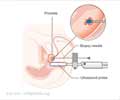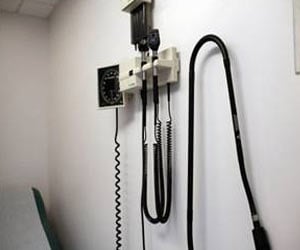- Intracavitary and interstitial (IC/IS) brachytherapy was found to be safe and does not increase the risk of ureteral stricture
- Closer observation following IC/IS IGBT help to spot ureteral strictures in the beginning before they become severe
- Inserting ureteral stents before radiotherapy can help visualize the organ on imaging which helps reduce the dose given during brachytherapy
A narrowing of the tube (the ureter) that carries urine from the kidneys to the bladder which may lead to kidney damage and serious infections. This condition is known as ureteral stricture.
The two large international trials explain that intracavitary and interstitial (IC/IS) brachytherapy was found to be safe which does not increase the risk of ureteral stricture, showed a new study presented at the ESTRO 37 conference.
- Intracavitary (IC) brachytherapy - involves placing an applicator in the uterus
- Interstitial (IS) brachytherapy - involves inserting needles directly into a tumor
From these results, image-guided brachytherapy using intracavitary combined with interstitial techniques was found to be safer and not linked with more cases of ureteral stricture when compared to using intracavitary techniques alone, said Dr. Lars Fokdal (MD, Ph.D.), a consultant at the Aarhus University Hospital, Denmark.
Findings of the Study
After a follow-up of the patients for between one and 163 months (the middle or ’median’ number of months was 29). Nearly 36 patients have been diagnosed with the more severe form of grade 3-4 ureteral stricture. The estimated risk of developing grade 3-4 ureteral stricture after three years was 2% which later increased to 3.2% after five years. Among the 1370 patients, the patients diagnosed with small tumors had the lowest risk of about 1.3%, and the risk was highest among the 130 patients with more advanced-level of cancer having hydronephrosis, a condition in which the ureters are swollen due to a build-up of urine during diagnosis. The risk of ureteral stricture in these patients was 13.6% after three years and 23.4% after five years.
There are various approaches which help to avoid ureteral stricture in patients who are at higher risk. One approach was closer monitoring following IC/IS IGBT so that ureteral strictures could be spotted in the beginning before they become severe. Another approach was by inserting ureteral stents before radiotherapy to visualize the organ on imaging and reduce the dose given during brachytherapy.
He continued: "Results from the retro-EMBRACE and EMBRACE trials have also shown that IC/IS image-guided brachytherapy is associated with a better outcome for patients in terms of survival and adverse side-effects. The increased, but targeted radiation dose to the tumor controls cancer better without adversely affecting nearby organs and tissues. Taking all these results together, we have growing evidence in favor of IC/IS IGBT for treating cervical cancer."
Symptoms of a ureteral stricture include
- back pain//
- loss of kidney function
- a risk of severe kidney or urinary tract infection
- By widening the blocked tube (ureter) and thereby, inserting a stent to keep it open
- By inserting a tube instantly into the kidney through the skin which is attached to a urine collection bag tied to the patient’s back
The findings from the EMBRACE and retro-EMBRACE trials provide reassuring evidence on the advantages of combining both the interstitial and intracavitary brachytherapy to treat cervical cancer patients.The study also helps to identify the patients who are at higher risk of complications which may help monitor them more closely by using a slightly modified treatment approach to decrease the risk. It is also clearly shown that using the latest technology can help translate into better outcomes and value for the patients, said The President of ESTRO, Professor Yolande Lievens, head of the department of radiation oncology at Ghent University Hospital, Belgium.
Source-Medindia










